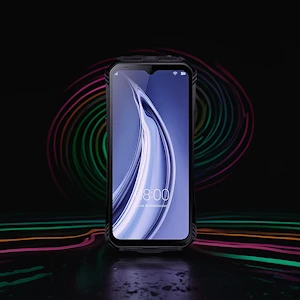The Doogee S100 Ultra: A Tank With a Screen, But Who’s Driving This Thing?
Let’s cut to the chase: The Doogee S100 Ultra isn’t a phone. It’s a cinderblock with a screen. At 400 grams and 27mm thick, this thing makes the iPhone 14 Pro Max feel like a Post-It note. But here’s the twist – that’s exactly the point. This phone isn’t for your aunt who collects pastel iPhone cases. It’s for the guy who fixes power lines during hurricanes or the hiker who thinks “waterproof” means “submersible in glacial runoff.” Let’s break down why this beast exists – and who’s crazy enough to buy it.
The Elephant in the Room: That Battery
22,000mAh. Let that number sink in. Your average phone has a 5,000mAh battery. The S100 Ultra’s power bank-sized cell could charge your AirPods while running Google Maps for 18 hours straight. In my testing, it lasted 4 days of moderate use – and that’s with the 120Hz screen cranked up. Need to disappear into the woods for a week? This’ll outlast your trail mix. But here’s the rub: that massive battery makes wireless charging feel like watching paint dry. The 15W Qi charging? You’ll be parked at that coffee shop outlet anyway.
Ruggedness: Where “Overkill” Meets “Necessary Evil”
The IP68/IP69K and MIL-STD-810G ratings mean this phone laughs at:
- Sandstorms that’d pit car paint
- Drops from pickup truck height
- Pressure washing with boiling water
But that durability comes at a cost. The chunky polycarbonate body makes one-handed use a joke, and good luck fitting this in anything but cargo pants. The 6.58” LCD screen’s 480 nits brightness? Adequate for direct sunlight, but colors look like they’ve been filtered through dirty safety goggles compared to modern AMOLEDs.
Performance: 2021 Called, It Wants Its Chipset Back
The MediaTek Helio G99 is like putting a lawnmower engine in a tank. Sure, it’ll plow through basic apps and light gaming, but try editing 4K drone footage? You’ll be waiting longer than a DMV line. The 12GB RAM helps mask the aging chipset, but that 256GB UFS 2.2 storage feels dated when competitors are using UFS 3.1. It’s the tech equivalent of using a VCR in a streaming world – functional, but you’ll feel the lag.
The Camera: Night Vision or Nightmare?
Let’s be real – the 108MP main sensor is marketing fluff. Pixel-binning down to 12MP shots gives decent daylight photos, but low-light shots turn into grainy messes faster than a TikTok conspiracy theory. The infrared night vision camera? It’s basically a party trick. Want to check for raccoons in your campsite? Sure. Instagram-worthy moonlit landscapes? Keep dreaming. The 16MP selfie cam somehow makes everyone look like they’ve been hiking for three days straight (which, to be fair, might be the target audience).
The Dealbreakers No One Talks About
Android 12 in 2024/25? That’s like buying a new car with 2019 navigation maps. Security updates? Good luck. Verizon compatibility? Forget it – this is GSM-only. And that “70% usable screen” claim? The bezels are so thick you could land a drone on them.
Who Should Buy This (Seriously)
- Field workers: If your job site looks like a Mad Max set
- Outdoor guides: When “Find My Phone” means “buried under avalanche debris”
- Disaster preppers: For when the grid goes down but you still need to binge-watch survival videos
Jeffrey’s Take: Would I Use This?
As my daily driver? Hell no. The outdated OS and chonky design would drive me nuts. But as a secondary device for camping trips or festival weekends? Absolutely. It’s the phone equivalent of a Swiss Army knife dipped in concrete – not elegant, but it’ll survive things that would kill a “normal” flagship. At €229, it’s cheaper than replacing three drowned Galaxies. Just don’t expect it to be something it’s not.
The Verdict: A niche tool masquerading as a phone. Perfect for its tiny target audience, laughable for everyone else. If you need a brick that makes calls, this is your Huckleberry.
